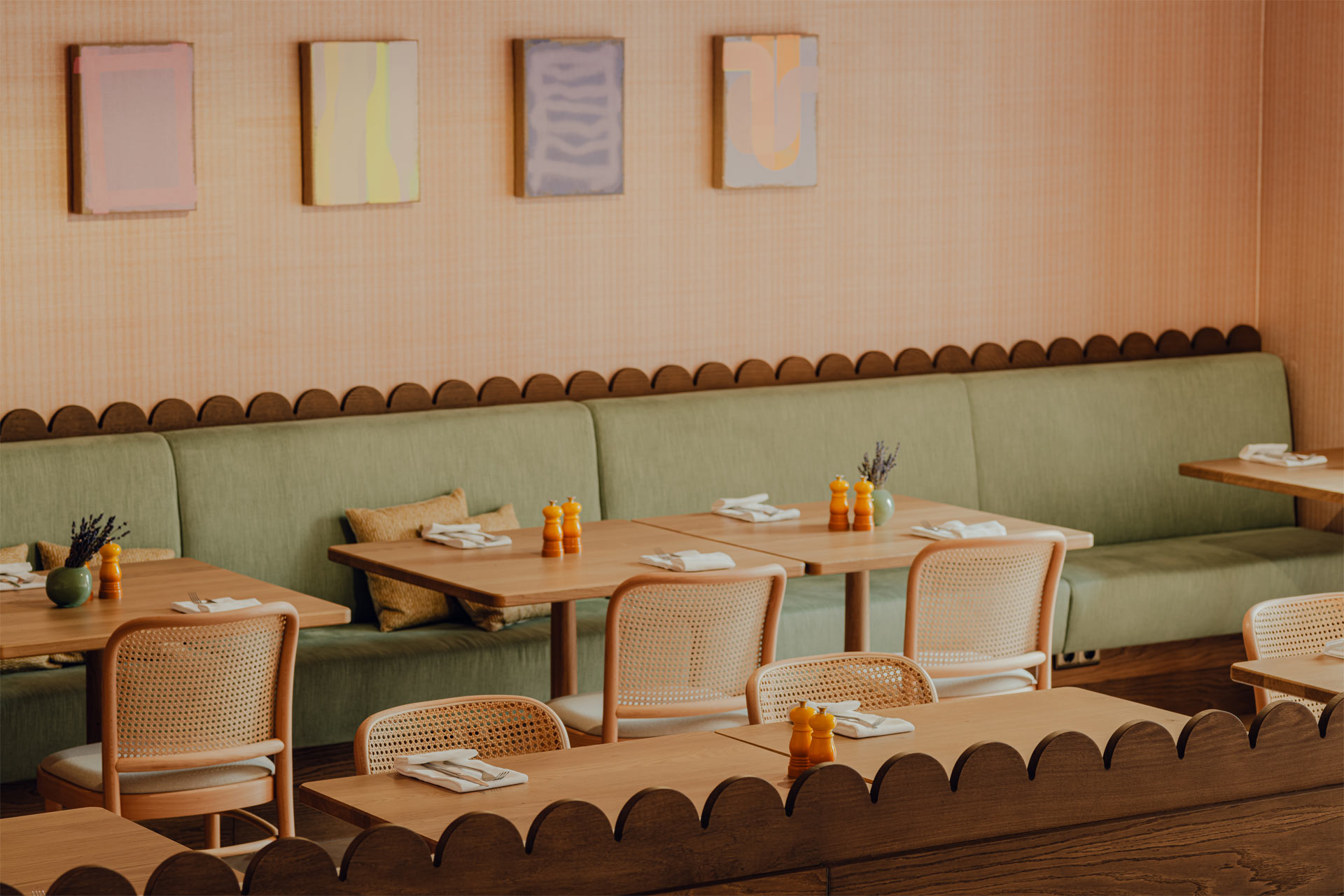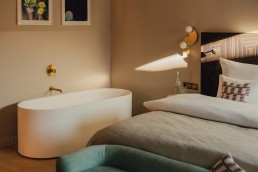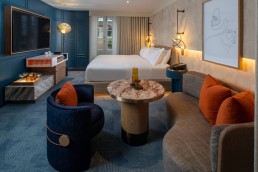Inside Hotel zum Hirschen: a 15th century Salzburg inn turned boutique hotel
Hotel zum Hirschen recently opened its doors in Salzburg, located between the city’s historic old town and the urban station district.
Originally an inn with roots dating back to the 15th century, Salzburg’s oldest family-run hotel has been revitalised under the guidance of Katharina Richter-Wallmann and her husband Nikolaus – the 11th generation to run the hotel.
The hotel’s 106 guestrooms have been reimagined by local interior designer Pia Clodi of Studio Eliste, who has presented a design scheme that preserves the character of the house while interpreting it in a new light. A soothing colour palette showcases warm shades and nature-inspired greens, while bronzed brass on lights and fittings provides modern accents. “I have collected many beautiful natural materials for an interior design that appreciates nature, and I pay careful attention to their use and application,” says Clodi. “In this project, my usual red thread has literally become a green one.”

The Austrian hotel’s interior features design highlights from labels such as Popus Editions, Ercol and Olaio, complemented by lighting from Francois Bazin Studio and Nuura. Austrian design studio Atelier Areti meanwhile has created bespoke luminaires for the hotel, while local gallery owner Sophia Vonier has curated a contemporary art collection.
Rooms at Hotel zum Hirschen range from classic rooms and studios, some with a loggia and garden view, to apartments and junior suites with a private sauna and freestanding bathtub. The two two-storey garden suites, housed in the former stables, offer a fully equipped kitchenette, private terrace and garden access.

The hotel offers multiple food and beverage venues, including a breakfast room with bright and warm colours and plenty of natural light, as well as the Hirschen Bar, with its cosy seating and eclectic accents.
An unusual find in a city-centre hotel, a large garden is currently under construction, courtesy of landscape architect Karin Standler, whose design concept combines aesthetic design with sustainability, aiming to improve the area’s microclimate.





